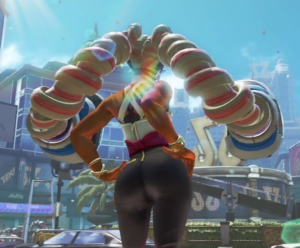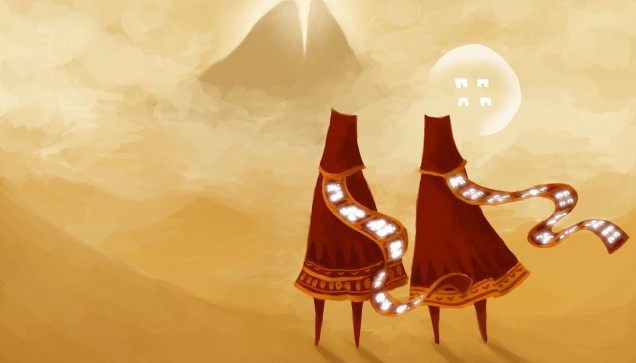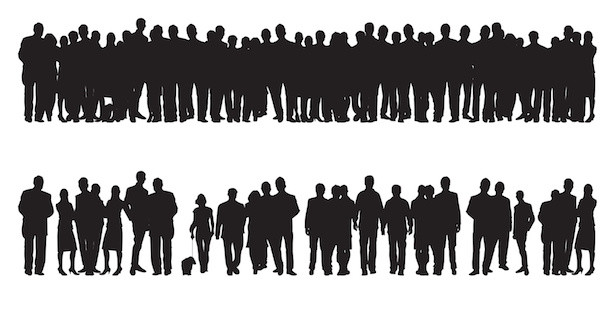I hadn’t had a chance to get back to State of Decay 2 for a while, but recently I booted it back up and picked up my community where I’d left off. Right now, I have nine people and only two of them are clearly visually coded as white. In my last two communities, fully half my survivors were Black women. It struck me anew, as I walked through the farmhouse base, where everyone was diligently working toward our continued survival, how unusual this was in a video game.
I’ve written a great deal about diversity in the State of Decay franchise, and given talks about the game as well. At the last Games + Learning + Society conference in 2016, and then again at the National Women’s Studies Association conference last year, I quoted a statistic that’s stuck with me since I first did the math: depending on how you look at the numbers, the first State of Decay, with its DLC, represents between 11%-15% of all playable female Black characters in games… ever.
I give a range of percentages here for a variety of reasons. First, obviously, more games have been released since State of Decay‘s debut in 2013, including games with playable Black female characters, but the second reason is that there’s been some controversy in recent years about this particular count. In 2015, Jef Rouner write a piece for the Houston Press stating there were only 14 playable Black women in gaming history. Rouner set some specific criteria, however: the characters couldn’t be licensed from other properties (so no Storm from X-Men games, for instance), and no fighting games, “where playability is a factor equally shared by all the characters” (I’ve never understood this reason for this criteria, but it was Rouner’s piece; he made the rules). Rouner also excluded any game with customizable characters, and I’d do the same. Not only do many of these not include great options for non-white characters, but they’re only characters if the player really chooses; they can as easily be self-inserts. There’s a distinct difference between Aveline de Grandpre and whomever I feel like playing in Fallout 4.
Jed Whitaker followed up Rouner’s article and filled in a few more from some lesser-known titles, taking the total from 14-20. Both lists miss a few even more obscure titles, like 1991’s Fascination, but even with the list filled out with scraps of gaming history, it’s slim. Another item of note here is both Rouner and Whitaker’s lists include Fran from Final Fantasy XII as a Black woman. But Fran is known for a few things beyond her slightly darker skin tone: she’s the only non-Hume (human) member of the party in that game, and she’s a Viera, with rabbit ears, red eyes, and feet structured in such a way that she’s required to wear high heels (it’s a whole thing, along with her barely there outfit). Is she a Black woman? Is she even a woman? I’m not comfortable classifying a hybrid creature as a Black woman—there’s a lot to unpack there, as we academics often say when we really just want to make faces and shake our heads.
This is a recurring question when trying to categorize game characters, who might be aliens in human shapes, or fantasy races with one or two nonhuman qualities who are otherwise humanoid. What are they? Who are they? What have they experienced? And if they have completely different experiences, backgrounds, lives, and if race is a social construct… well, you see where this spirals away.
So we’re left with one very important question when we try to build this kind of census: What is Blackness in a video game?
I can’t answer this; I’m not equipped, as a white woman, to interrogate what it means to be a fictional person of color at all. Neither can most game devs, frankly, because we know the populations of game studios skew in particular ways. So rather than creating one list and setting boundaries, like Rouner and Whitaker, I made multiple lists and separated characters by criteria. You can sort the inclusion of Black female characters by those who are roundly, solidly, human-in-this-or-similar-worlds, and then State of Decay, as a franchise, is a huge percentage; in both games, there are featured Black female characters, playable, with personalities and back stories. They aren’t caricatures. There is some use of tropes, but few video games get past that at all. If we make the full list, including aliens, fantasy races, and whatever else, the numbers expand, but State of Decay still holds a significant number of playable Black women.
 But that full list has a lot of problems. In some cases, a “Black” character may just be a purchasable skin or a character who’s ambiguously brown, emphasis on the ambiguity. In the cases of some of these ambiguous characters, there exist extensive online debates about how to categorize them—are they Latinx? South Asian? Black? Both Nisha and Aurelia in Borderlands: The Pre-Sequel are debated and discussed in this vein, and voices, different skins/heads, and surnames are discussed as people search for evidence. And when it comes to women in fighting games whose complexions change between iterations of the game—what then? No wonder Rouner and Whitaker tried to avoid fighting games. Then there are the women who might just be designed with ganguro style in mind – this comes up often, considering the number of potentially Black female characters with white or light hair and light-to-medium skin tones. Finally, of course, there’s a question of whether of not the voice actor’s ethnic background makes a difference in the whole package of the character, and a further question of how to weigh, in general, controversial characters like like Twintelle from ARMS: for some, her weaponized hair and sexualized design is a big problem, while others might see her as a strong character who represents resistance (and what does it mean that Nintendo reportedly strove to create diversity in ARMS?). She’s Black, but what does her Blackness represent? I, again, cannot be the arbiter… but if we exclude all the problematic Black characters in games, or indeed, all the problematic women, who do we have left?
But that full list has a lot of problems. In some cases, a “Black” character may just be a purchasable skin or a character who’s ambiguously brown, emphasis on the ambiguity. In the cases of some of these ambiguous characters, there exist extensive online debates about how to categorize them—are they Latinx? South Asian? Black? Both Nisha and Aurelia in Borderlands: The Pre-Sequel are debated and discussed in this vein, and voices, different skins/heads, and surnames are discussed as people search for evidence. And when it comes to women in fighting games whose complexions change between iterations of the game—what then? No wonder Rouner and Whitaker tried to avoid fighting games. Then there are the women who might just be designed with ganguro style in mind – this comes up often, considering the number of potentially Black female characters with white or light hair and light-to-medium skin tones. Finally, of course, there’s a question of whether of not the voice actor’s ethnic background makes a difference in the whole package of the character, and a further question of how to weigh, in general, controversial characters like like Twintelle from ARMS: for some, her weaponized hair and sexualized design is a big problem, while others might see her as a strong character who represents resistance (and what does it mean that Nintendo reportedly strove to create diversity in ARMS?). She’s Black, but what does her Blackness represent? I, again, cannot be the arbiter… but if we exclude all the problematic Black characters in games, or indeed, all the problematic women, who do we have left?
With the characters where there was any question about whether or not they were Black women, as with Nisha and Aurelia above, I did a little research, and in most cases, there was an argument somewhere, on reddit perhaps, or a forum. When we know a character’s identity for certain, it’s often because they have locs, or braids, or speak in a stereotypical manner. There are problems all the way down. Only sometimes do we find out through narrative, or because the character is just a good enough representation of a person that there’s no need to ask; they’re just Black, and it’s part of their personhood.
So we try to make a list that’s inclusive of characters we can be certain of, and exclude those we’re not, relegating them to other lists, other categories, other possibilities. If we’re generous, in November, 2013, at the time State of Decay’s Breakdown DLC was released – a mode which adds two playable Black female characters – the list of playable (probably) Black female characters was about 21. This includes some games that Rouner and Whitaker missed, and since it predates their lists by more than a year, is missing games they identified. There are a few they include that I wouldn’t, like Fran, as above. I say “about” because I don’t believe you can make a single list and say THIS IS BLACKNESS IN VIDEO GAMES. But if we’re looking at about 21 characters in late 2013, then State of Decay comprised 14% of playable Black women in video games. A single game. 14%. Since then, the numbers have gotten better; we’ve seen a few more playable characters added, but State of Decay 2 adds another Black woman from the selectable characters in the beginning (part of the siblings pair), and as I indicated above, it’s easy to load your base with Black characters.
So here’s what I come back to: there’s a serious lack of playable Black female characters in games, no matter how open the criteria are, but even trying to create a census opens huge questions. But no matter how we look at it, a franchise like State of Decay opens up vast potential to increase these numbers thanks to the development team simply trying to render a reflection of the world as they see it. And that, I think, is what we need more of in general—because it’s not only playable Black women who are lacking in games.
But what’s needed here is not my voice, or at least not my voice alone. I’m asking Sam if she’ll help me unpack some of these more difficult questions in a longer piece. I’m happy to lend my tireless need to seek out the tiniest details in the farthest corners of the internet, but my data gathering can only take me so far here. I’m hopeful that together we can figure out a little more.
You can reach Alisha at her website.




